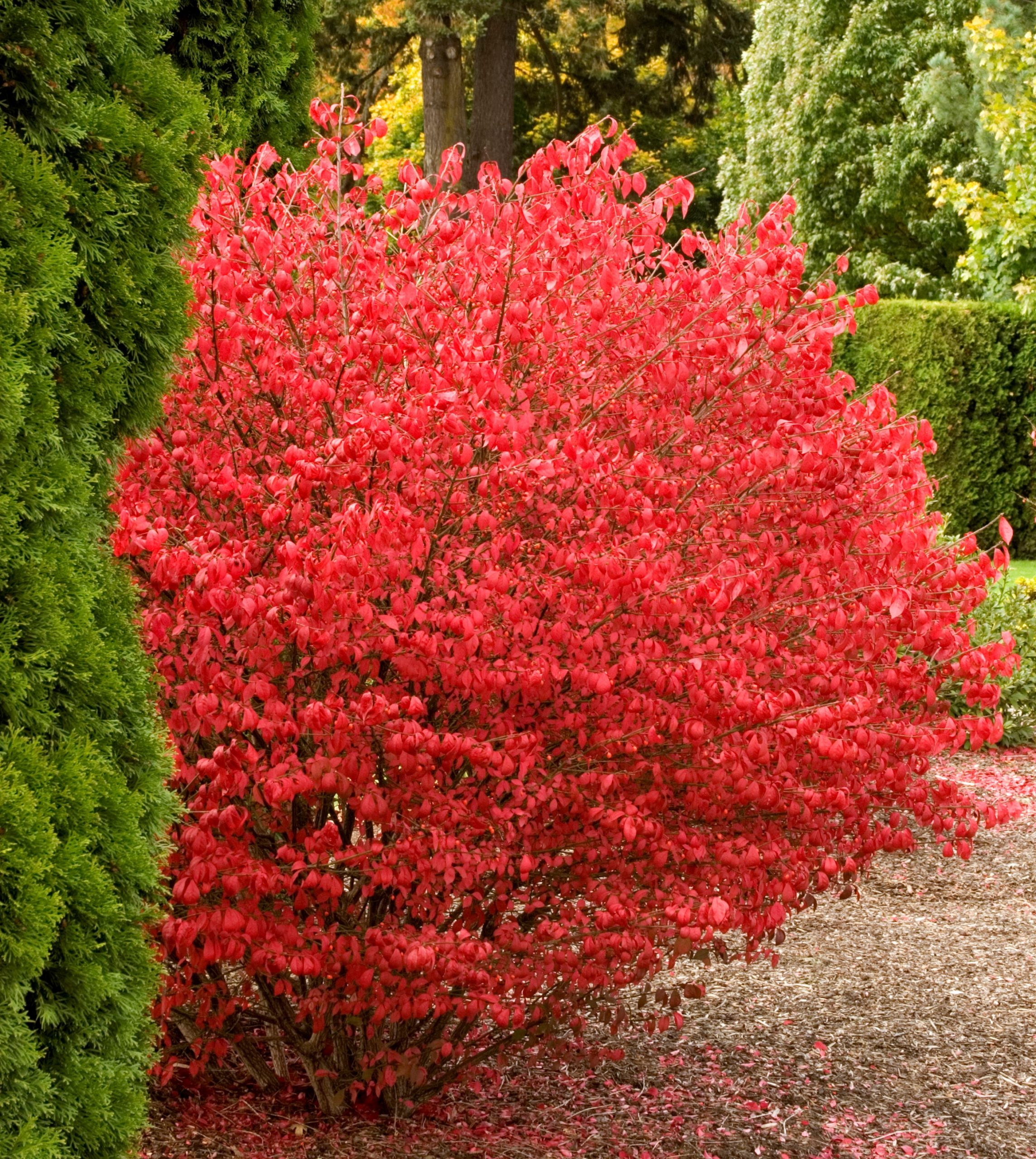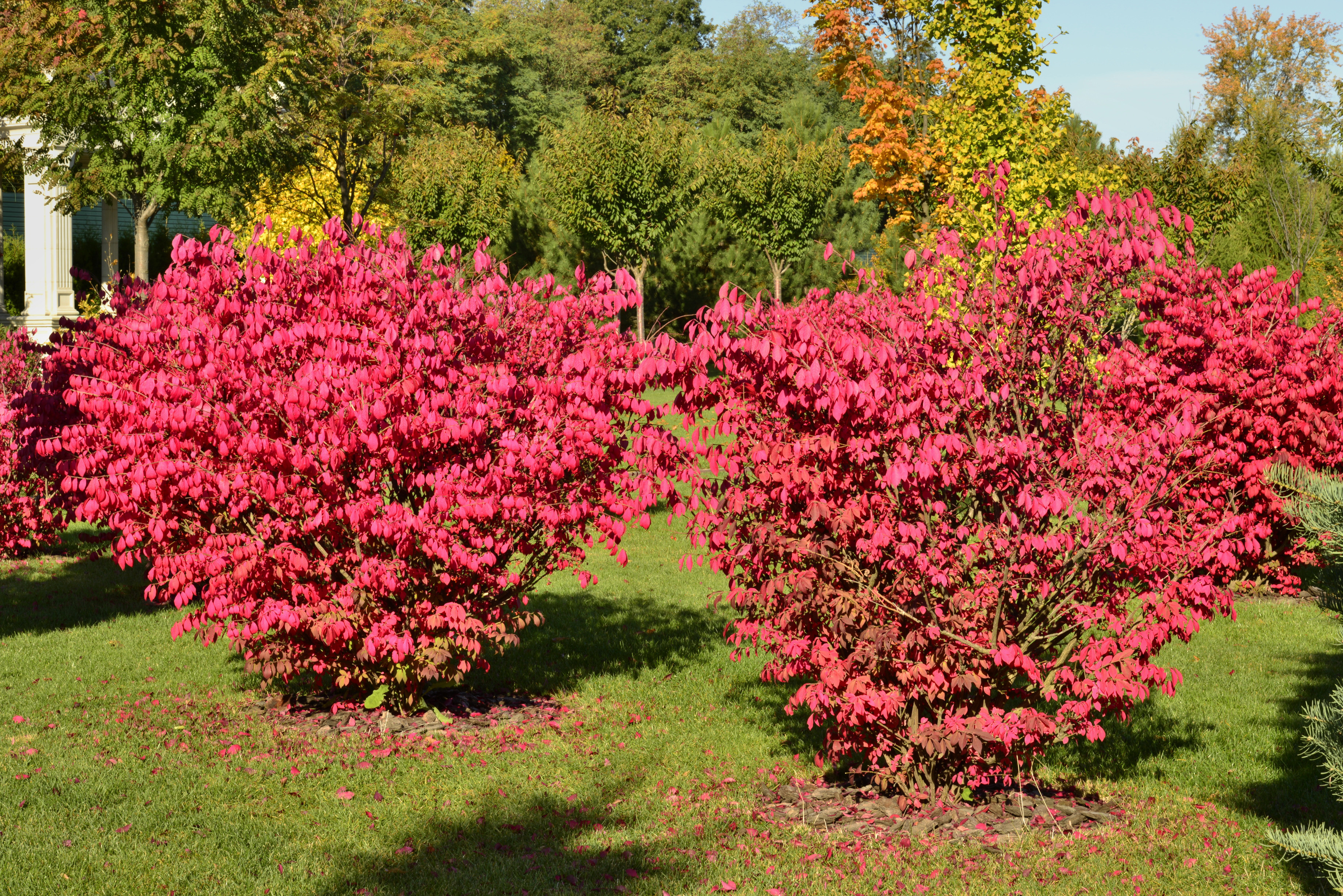

Transplanting: When pruning is no longer a viable option, you might want to consider transplanting the bush to a larger space, or replacing it altogether with something more size appropriate.įast Facts Dwarf-winged Burning Bush ( Euonymus alata "Compactus").Although this type of pruning is extreme, the plant will recover nicely over a period of years (providing its in good health). Rejuvenating (early spring): To encourage all new growth, prune the bush back severely, to within 6 to 12 inches from the ground.Make sure to trim the top slightly narrower than the bottom to allow light to penetrate to all of the branches. Shearing (early spring): Use a hedge clippers to shape multiple bushes growing together into a traditional hedge.An alternative is to slowly encourage a more upright, tree-like form by removing all of the lower branches over time. This will keep growth manageable - at least for a few years. Thinning (when convenient): Use pruning shears to remove up to 1/3 of the old or dying branches.However, when you need to control their size and shape (and eventually you will), pruning will become necessary. Healthy growth does not depend on regular pruning, so in most cases, your shrubs will look best if left alone.

The answer as to whether or not you should prune your burning bush depends entirely on your individual situation. Prolonged stress like an extended summer drought may cause your burning bush to turn color prematurely.īurning bush is generally trouble-free, but watch out for scale and powdery mildew. Like nitrogen deficiencies, this problem can also be remedied through a yearly application of the right type of fertilizer. Have your soil tested first to determine existing nutrient levels before starting a fertilizer regime.īurning bush growing in alkaline soil may develop mild leaf chlorosis (yellowing leaves). Plants benefit from being fertilized annually in the spring before new growth begins. This can be remedied by yearly applications of fertilizer, or by switching to a mulch that decays more slowly. The rapid breakdown of hardwood mulch around the shrubs may result in a nitrogen deficiency (yellow leaves and slow growth).

#Burning bush hedge full#
Full sun is needed for burning bush to reach its full color potential.Fortunately, they also adapt to partial shade, poor soil, dry soil, and the wrong pH, although each of these elements may adversely affect their fall color display. It is this ability to thrive in less-than-ideal conditions and subsequent tolerance for abuse (and pollution) that makes them such popular choices for the urban landscape.īurning bush prefer to grow in a sunny spot, and in soil that is moist (not wet) and slightly acidic. Scientific Name: Euonymus alatus (Thunb.) Sieb.Winged Burning Bush is easy to care for and considered essentially maintenance-free, at least until they outgrow their space. The plant is still seen as the symbol of the Presbyterian Church in Ireland and, for the non-religious, as a way to brighten up a fall landscape with its brilliant red leaves.Ĭommon Name(s): Winged Burning Bush, Burning Bush, Spindle Tree, Wahoo Although the Burning Bush can be beneficiary to the health, the amount in which it is used should be monitored, as it can be toxic in large doses.
#Burning bush hedge skin#
Burning Bush is said to also produce a calming effect on the gastrointestinal tract and can also be used as a topical treatment for a variety of skin ailments. They can be used to lower fevers and kill various infections, but can cause women to have strong uterine contractions that could abort a pregnancy. The plants roots have been used for a wide variety of medicinal reasons. Birds eat the fruit and disperse the seeds. It is a threat to natural areas because it shades out native herbs and crowds out native shrubs. The shrub becomes a nuisance because of the ease with which its seeds are spread, the readiness of germination, its adaptability to various soils, and its tolerance of full shade. Euonymus alata is native to Asia and has been introduced to the United States from New England to the Gulf Coast.


 0 kommentar(er)
0 kommentar(er)
